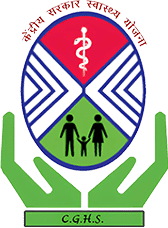Many people believe that if a person develops or is born with a squint, it is permanent. Also, there is a false assumption that squinting eye in children needs no evaluation till they are grown up.
To break a few myths in India, it is important to first understand facts about squint and consequences when left untreated. The general incidence rate of strabismus, or squint, is between 4% and 6%. However, premature new-borns have an incidence rate of 30% to 40%.
What is a Squinting eye?
To keep your eyes straight brain eye coordination is required. There are nerve fibres connecting brain centres with eye muscles which send signals to move eyes in different directions. Squint can arise due to either neurological (defect in connecting nerve fibres) or local cause (defect in eye muscles).
There are types of squints you must know about & what they are known as:
Types of Squint Eyes:
– An eye that turns inwards is called Esotropia.
– An eye that turns outwards is called an Exotropia.
– An eye that turns upwards is called a Hypertropia.
– An eye that turns downwards is called Hypotropia.
Before treatment, there are two significant subjects to understand.
– The age group of the person having a squint
– What are the symptoms of squint?
Childhood Squint
In children, squint is easily noticeable. It can be present since birth. In some situations, it resolves by 6 months but if it persist, it’s always advisable to seek medical help from a child eye care specialist known as Paediatric Ophthalmologist. During child’s developmental period, the eye and brain co-ordination develops during the first 8 years of life and it leads to full vision development. Misalignment of eyes prevents this brain-eye co-ordination as the image in misaligned eye is not falling on its corresponding point on the retina. With time, the child may stop using this eye and if left untreated, may lead to lazy eye (Amblyopia) i.e vision cannot reach 100% even after spectacle use or any other treatment. After 8 years of age, once full eye brain coordination develops it’s difficult to achieve full vision even with various treatment modalities.
Adult Squint Eyes
Some adults, or even older adults, develop squints due to medical problems such as thyroid, diabetes, head trauma, stroke, etc. But it is curable by non-surgical treatments and surgical modalities.
Symptoms of squint
In general it’s difficult for children to understand symptoms. They might complain of frequent headaches, blurring of vision and intolerance to light. Signs are more important than symptoms in children. You might notice abnormal head posture like face turn to specific side or head tilt while watching television or while reading.
If you notice sudden onset of squint in your child, please consult paediatric ophthalmologist immediately.
Adults can complain of double vision, tilting of objects, headache and even limitation of eye movements depending upon type and onset of squint.
Treatment for Squint
NON SURGICAL– This includes various types of vision therapy. It’s not necessary that squint can be corrected only surgically. Depending upon the type of squint and age of presentation, paediatric ophthalmologist can help you with type of eye exercises (both office based and home based) and achieve better control of squint. There are various types of exercises depending upon the type of squint. Few of them are Pencil Push up exercises, Brock String and Barrel Cards.
Prism Eyeglasses: It is used for short-term purpose. Prism glasses are thin press-on vinyl stickers that can be added on both the front & back surface of your normal powered glasses.
Surgery: When other methods do not give beneficial results, surgery could be an option. Squint surgery involved changing position of eye muscles. There are total 6 eye muscles in each eye which are attached on white part of eyes. As parents, we usually get anxious or get panicked if surgery is advised for a child below 8 years. But, as the child needs straight eyes for normal and full vision development, your consulting pediatric ophthalmologist may advise surgery for the benefit of the child. Delaying surgery despite of paediatric ophthalmologist advice might not restore vision and will give only cosmetic results.
Conclusion
Squinting of eye is a condition that can be cured with various methods. Be more vigilant and prompt in consulting your paediatric ophthalmologist if your child is having squint as it can lead to lazy eye if not treated timely especially below 8 years of age. But the right treatment under experts is now possible in Mumbai. Iksha Eye Care has a team of the best paediatric ophthalmologists in Mumbai to treat squint eyes. We have a team of doctors who are well-experienced and passionate about serving every child as we believe that ‘every child is special’
Book an appointment with our squint specialists in Mumbai today.








